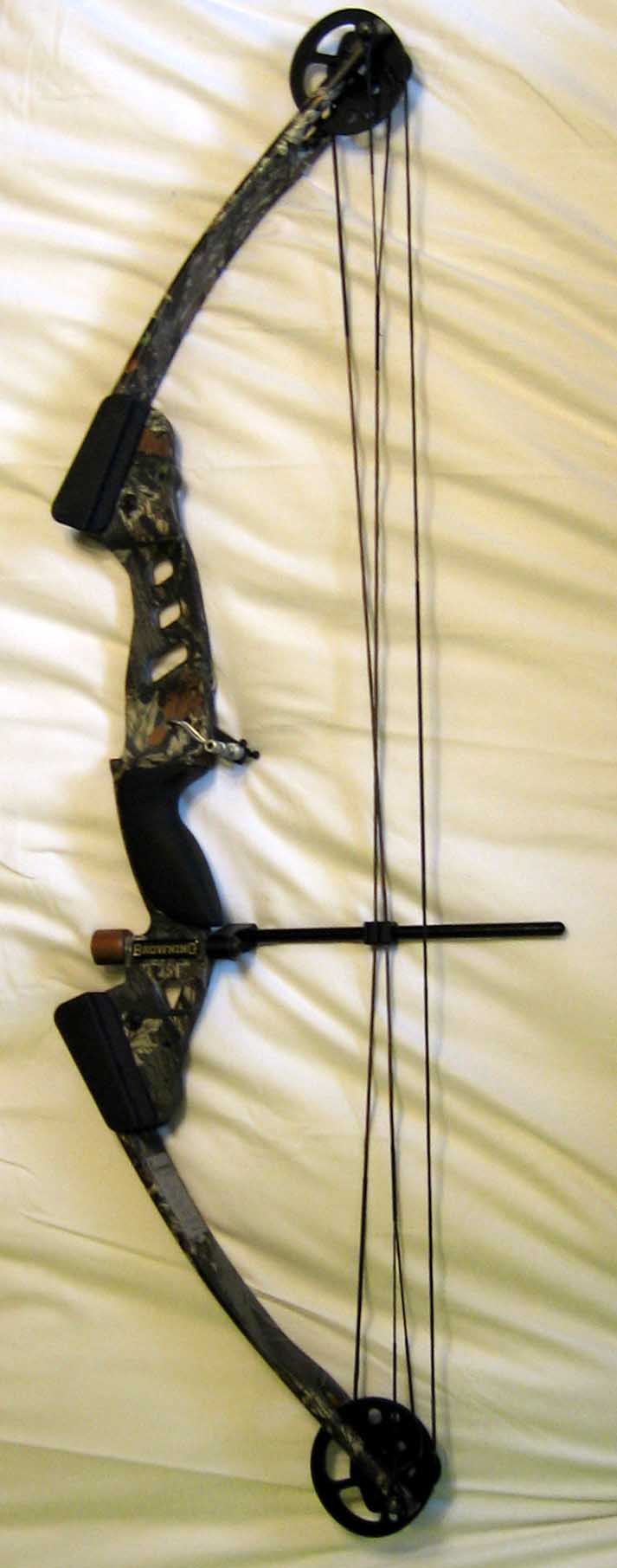Facts about Compound Bows
Compound bow is a complex modern bow. It uses levering system of cables and pulleys to bend the limbs. This bow was invented by Holless Wilbur Allen, Jr. in the 1960s. He applied for a patent on June 23, 1966 and was granted one in December 1969. He basically sawed the ends off a conventional recurve bow and then added pulleys (cams) to the end of each limb. One or both of the cams have one or more cables attached to the opposite limb. When the string is drawn back, cams turn, flex limbs of a bow and add energy to the bow. Cams are eccentric so they act as levers and allow for archer to hold the bowstring in the maximum draw without too much strength. This is known as "let off" and allows for more accurate and far less strenuous aiming.
Central part of the compound bow is called the riser and it holds limbs, sights, stabilizers and quivers. That is why it is made of aluminum, magnesium alloy, or carbon fiber to be as rigid as possible. Composite materials are used for limbs because they have to be flexible yet not to break under the stored energy which is used to shoot the arrow (speeds of arrows fired from compound bows can reach from 46 to 113m/s.) Bow strings and cables of a compound bow were at first made of plastic-coated steel. Today, high-modulus polyethylene is used and designed in such way to have great tensile strength and minimal expansibility because bow has to transfer all of its energy to the arrow without much loss.
Arrows used for compound bow are not much different from those used with other types of bows. They are made of aluminums alloy, carbon fiber, or composite of these two materials. They only have different “spine.” Spine is a measure of stiffness of the arrow and, for instance, arrow which bends less is said to have more spine. Arrows for compound bow have less “spine” (relative to the recurve bow) because compound bow will accelerate an arrow more gently and linearly. Wooden arrows are not used because compound is too strong for them. It could break them and even hurt the archer.
Advantages of a compound bow are that they store more energy and shoot faster than other types of bow of the same size; acceleration of the arrow can be controlled with the design of the cam and with that different bow can be made for different archers; because of the way it works it can be designed with horizontal limbs which lessens the recoil and vibrations and makes the bow more accurate; bow doesn’t react to temperature and humidity changes and gives constant accuracy; some archers that use this bow use mechanical release aid to hold and release the string which gives them more consistent release; they also use a sighting system, that consists of a back sight and a front sight, which helps them with aiming.
Compound bow also has some disadvantages. It is of a fairly complex design, with large number of moving parts. They require much more additional maintenance than other types of bows and create more points where a compound bow can break. Bow can be damaged when fired without an arrow (“dry fire” or “dry loosing”) even after only a single dry fire and some warranties don’t cover this type of damage. Replacing bow string or cable requires a special tool (bow press) that can sometimes be found only in archery pro shops. Because the bow is so light it is easier for archer to twist the bow around the vertical axis and make left-right errors.
